What pipes for heating is better: analysis of 4 most common
Let's see which pipes are better to use for heating, because in the current abundance of offers submitted by specialized stores it’s easy to get confused. These or other products have their own both positive and negative sides. In order for your choice to become more conscious, consider the technical characteristics of the most common options.
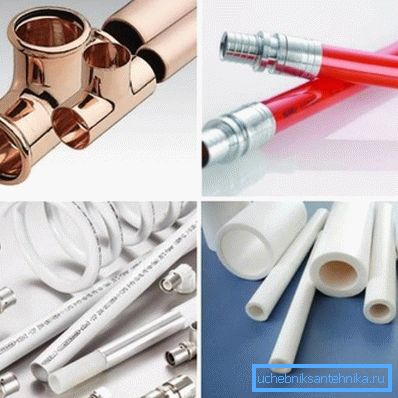
Analysis
The implementation of the heating of each building has its own technical features that form certain requirements for the properties of the pipeline. Therefore, before proceeding to the analysis of pipes from various materials, find the answers to the following questions:
| Question regarding the planned heating system | Possible answers |
| How is the flow of coolant? |
|
| How was the pipeline installed? |
|
| Possible pressure inside the structure? |
|
| Coolant temperature? |
|
Now, knowing the requirements that the pipeline of your home or other building, in which you are going to lay it, must be ensured, you can start searching for a suitable solution. So, from which pipes it is better to do heating?
Option 1: steel
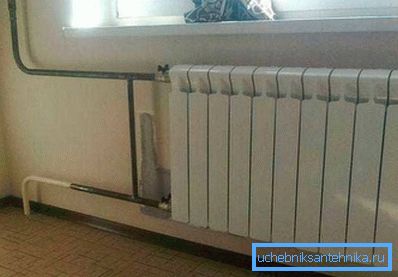
The pipeline from metal is tested by time and has some indisputable advantages:
- High strength properties. Structures made of steel have a high level of reliability and are practically not subject to mechanical deformations.
- Resistance to extremely high temperatures.
- Small linear expansion, which eliminates the need for compensators.
But there are also significant shortcomings, which also push for the search for alternatives:
- The complexity of the installation work. You will definitely need a welding machine and qualified skills to use it if you wish to install ironwork yourself.
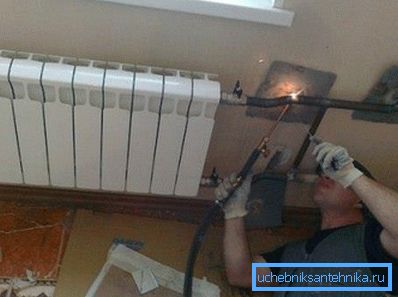
Tip: it is recommended to install the iron pipeline before installing the interior decoration. Otherwise, the probability of damage to an expensive decor is very high.
- Susceptibility to corrosion. Rust is a scourge of iron products, which sooner or later destroys them in case of contact with water, which is inevitable in heating systems.
Separately, mention should be made of high thermal conductivity. Rapid heat transfer in the heating zone is, of course, a plus, but his own hurry loss on the way to his destination is a minus.
Tip: try to warm the section of the iron heat line, located outside the building. This will significantly save on heat carriers.
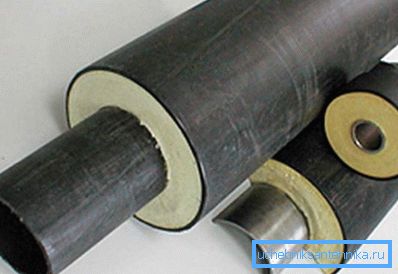
Option 2: copper
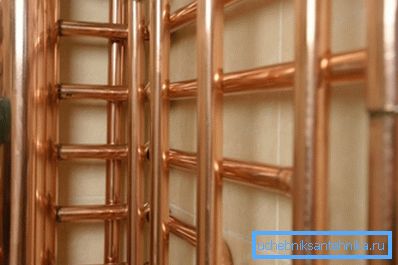
If we consider from the point of view of quality, then copper products, undoubtedly, gain, possessing such qualities as:
- High resistance to mechanical stress and temperature extremes.
- Luxurious appearance, indicating the wealth of the owners.
- Lack of exposure to corrosive processes.
- Long service life, reaching one hundred years.
That is, copper is beautiful, high quality and for a long time.
But not everyone can afford such a heating system, here the negative sides of such a masterpiece come into play:
- Very high price, which is caused by both the high cost of the material itself and the complexity of the production process.
- Difficult installation instructions, involving the use of soldering with capillary fittings and silver-containing solder.
Option 3: stainless steel

Excellent combination of price and quality. In stainless steel pipes to the advantages of steel is added susceptibility to corrosion processes with a moderate increase in cost. Such products, in turn, may have a different design, read the technical points that you should pay attention to:
| Technical feature | Possible options |
| Presence of seam |
|
| Wall thickness |
|
Option 4: plastic
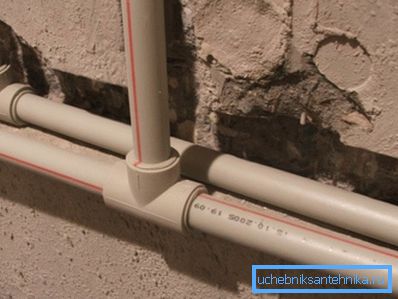
The most economical and simple way to create a functioning heating system is to install a plastic pipe.
In this case, the following advantages should be highlighted:
- Low cost of products. Polypropylene has always been cheaper than any metals.
- Simplicity of installation work, which also allows you to further save on the call of professional plumbers.
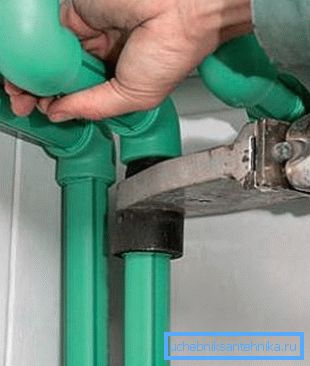
- A light weight. Allows you to do simple fixtures and eliminates the load on the foundation of the house.
- Smooth inner surface. The possibility of clogging is practically excluded.
- Lack of corrosion processes.
- Durability. The possible service life reaches fifty years.
But do not forget about the negative points:
- Limited heat resistance. Manufacturers indicate the limit of a possible temperature of 95 degrees Celsius; exceeding it can cause deformation and even destruction of the pipeline.
Tip: in regions with particularly severe winters, where it is possible to exceed the permissible coolant temperature, it is recommended to use reinforced models. An additional layer of aluminum foil can significantly increase the heat resistance.
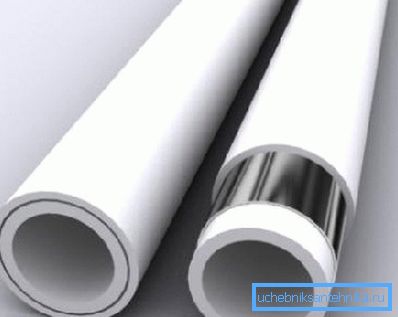
- Poor mechanical resistance. Strong physical exertion can cause the structure to an emergency condition.
But plastic can also be different, which leads us to the question: which propylene pipes are better for heating? Products from low-pressure polyethylene possess increased strength and temperature resistance. And their cost is not much higher.
Conclusion
It is difficult to unambiguously answer which pipes for heating are better. For this purpose, it is possible to use products from various materials, which we considered above. Make your choice according to the current situation and your material capabilities (see also the article Pipe D16t: standard and features of the material).
The video in this article will introduce you to additional materials. Have a good choice!
